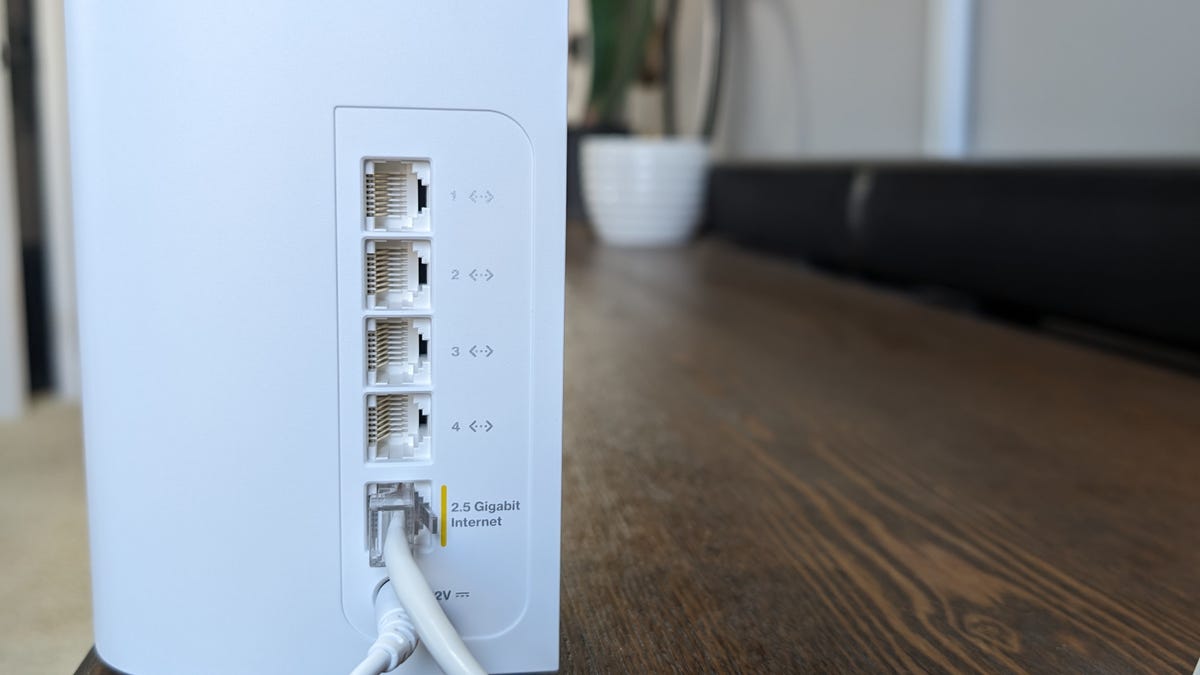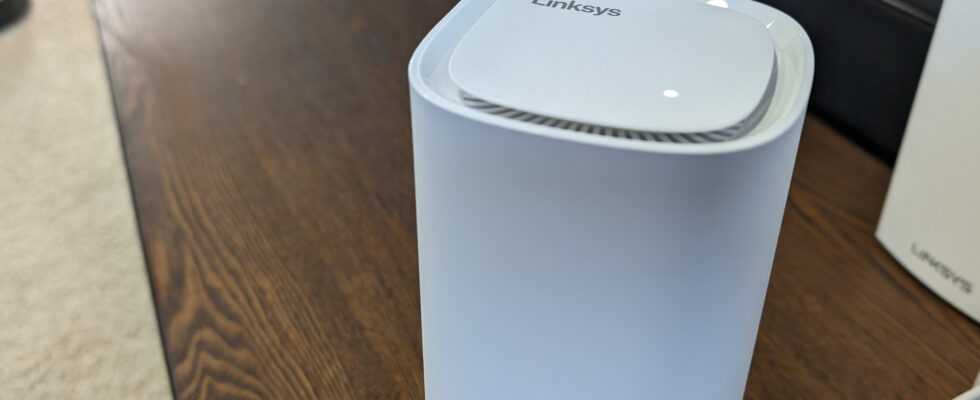I’ve been a fan of Linksys mesh routers for some time. I have used the Velop series for years and have always found them to be very reliable mesh routers. Since I live in a 280 square meter house, a mesh network is a must if I want Wi-Fi connectivity without dead zones. This is especially true since I work out in my basement and need connectivity for the television that sits in front of my treadmill and rowing machine.
Recently, Linksys released the Wi-Fi 7 wireless mesh router. Although it is expensive (nearly $500), it is on par (or cheaper) than other wireless mesh routers that support Wi-Fi 7.
ZDNET’s Key Findings for the Linksys Velop Pro 7 Router
- Super-fast speeds that don’t drop or slow down throughout your home or office depending on the number of connected devices.
- Very simple installation.
- A little expensive.
What is Wi-Fi 7? Also known as 802.11be or Extremely High Throughput, Wi-Fi 7 offers significantly higher wireless speeds than other routers. It does this by packing more data into each transmission by using 320 MHz channels (which are twice the size of previous generations of wireless networks). Wi-Fi 7 not only offers faster connectivity, but also better reliability, responsiveness comparable to that of a wired connection and enhanced security.
What is a mesh network? If you’re asking yourself this question, you’re probably not the only one. A mesh network uses nodes to create a sort of “net” over a larger area, so that it covers a much greater range. With a mesh network, you create a main node to which you add other nodes. In fact, each node works together to create a very large wireless network.
Fortunately, most mesh networks manage assigning configurations to each node from the master node, so you don’t have to configure them manually. And with Linksys mesh networks, it’s all done from one easy-to-use mobile app. With the Linksys app (for Android and iOS), anyone (regardless of skill level) should have no problem setting up the Velop 7 Pro mesh network.
The characteristics of the Linksys Velop Pro 7 router
For those who like to check out the specifications of a device, here they are.
- Super-fast video streaming and gaming.
- Includes Cognitive Mesh for simple setup and automatic optimization of your WiFi.
- Includes Cognitive Experience for immediate assistance in case of problems.
- Includes Cognitive Security for secure online browsing.
- Backwards compatible with all previous Wi-Fi generations.
- Networking Pro 620 platform.
- Supports up to 4 simultaneous SSIDs.
- Supports WPA2/WPA3 Mixed Personal, WPA2 Personal, WPA3 Personal and parental controls.
- Support for Network Address Translation (NAT).
- Stateful Packet Inspection (SPI) firewall.
- 802.11ax for 2.4 GHz and 802.11be draft 2.0 for 5 & 6GHz.
- Bandwidth up to 320 MHz and 4K QAM in the 6 GHz band.
- Channel bandwidth up to 240 MHz in the 5 GHz band.
- MLO (Multi-Link Operation).
- CPU – 1.5 GHz Quad core.
- Dimensions – 95 x 95 x 221 mm.
- Connect up to four devices (per node) via CAT 5 cables.

You can connect up to four devices, via CAT 5, to the Velop 7. Jack Wallen/ZDNET
A Velop 7 Pro three-pack covers up to 280 square meters, which makes it safe to assume that each node covers 95 square meters. With this in mind, you can purchase the number of nodes you need to cover your entire home.
My experience with the Linksys Velop Pro 7 router
Before installing the Velop 7 Pro, my mesh network was powered by a Linksys Velop MX5300 tri-band Wi-Fi 6 router, using just two nodes. With this network, the main problem was that sometimes when I watched an SVOD service on the basement TV, the shows would pixelate or not even display.
I added the Velop 7 mesh network and plugged the basement TV into the node using an RJ 45 cable. The first test was to turn on the TV and see what it was with my SVOD service. To my surprise, pixelation never appeared and every episode or movie I launched played exactly as expected.
The next step was to perform a speed test. On my desktop (Ubuntu Budgie), I ran a speedtest while connected to my original mesh network. Then I connected to the new wireless network and performed the same test with the same browser. I have three wireless networks to choose from and here are the average results:
- Velop MX5300 – 90.71 Mbps
- ATT Fiber wireless router – 450 Mbps (equivalent to the operator box in France equipped with a router)
- Velop 7 – 300 Mbps
Clearly neither mesh network can compete with my carrier’s wireless router (each connecting directly via an RJ 45 cable). However, this wireless router does not produce a strong enough signal to be effective in the basement (especially for television). And given that the Velop 7 is only 150 Mbps (on average) slower than this carrier router, it’s still quite usable (especially compared to the MX5300).
So for pure connectivity, the Velop 7 Pro mesh network is a big win, especially considering it covers the entire house without a single signal drop or dead zone. In fact, I ran the same speed test (on an M1 MacBook Pro) in every room in the house and the Velop 7’s speeds didn’t fluctuate enough to make a difference.
This is the strongest mesh network I have ever used. And with enough speed to stream SVOD (and other services) in the basement (with the main node upstairs), the Velop 7 seriously impressed me.
ZDNET Buying Tips for Linksys Velop Pro 7 Router
You may think that $500 is a steep price for a wireless router, but when you have a large home or office and need to cover every inch of Wi-Fi connectivity, the price is worth it.
If you can afford enough knots to cover your entire home, you’ll see all the frustrations of using a traditional method disappear.
And with ease of installation within everyone’s reach, this mesh network is to be recommended.
Source: “ZDNet.com”
